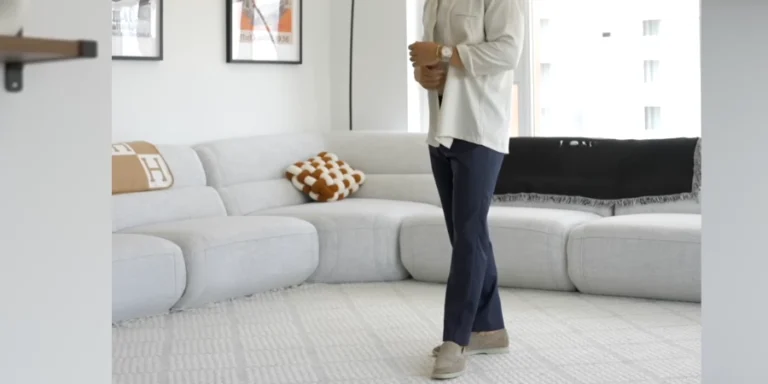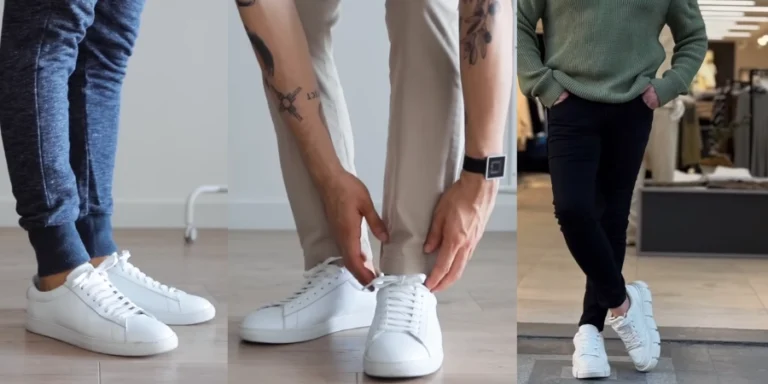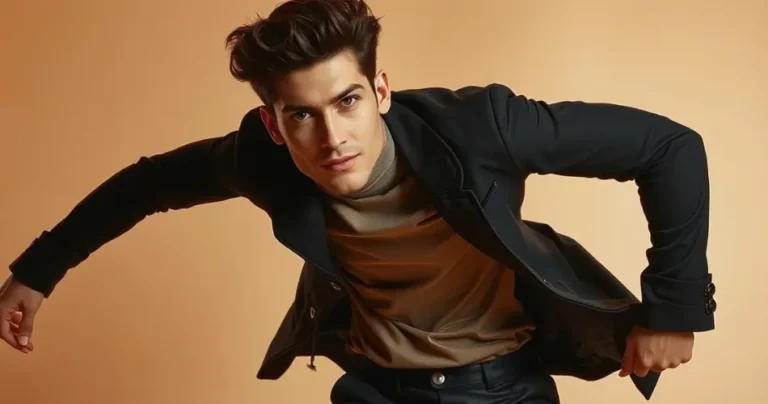Trap Bar Deadlift Tips to Elevate Your Modeling Game
Are you looking for a workout to strengthen you, assist your balance, and shape your body into a model-sized body? The trap bar deadlift can do all of those things and more.
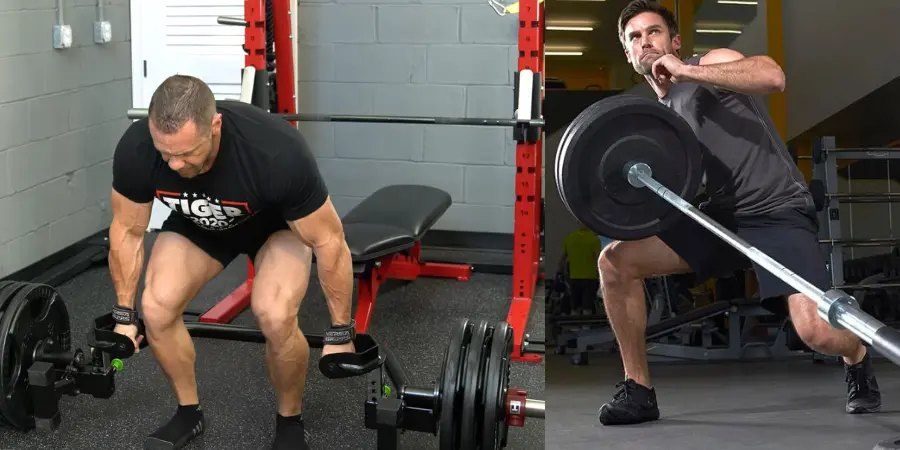
This blog post is about learning this flexible lift and getting the most out of it for your modeling goals. By the end, you’ll have plans you can follow to improve your working out and build a body that makes you look great and act with poise and confidence. Now is the time to change how you work out and become stronger and better.
Straight bars and trap bar deadlift side by side
Barbells are straight, flexible bars with weight-loaded sleeves on each end for heavy pulling. When you do a deadlift with a barbell, you stand behind it, grab it tightly, and lift it with force and accuracy.
Hex bars are another name for trap bars because they have a unique hexagonal shape. They have two sets of handles for a comfy grip and sleeves that can be used to add weight. One set of handles is flush with the frame of the bar (called “low handles”), and the other is raised (called “high handles”). This lets you lift in different ways. You step inside the body of a trap bar, grab the handles you want, and lift confidently.
Similarities
The barbell deadlift and the trap bar are more alike than they are different in important ways. Both involve picking big weights off the ground with similar loads, training the hinge pattern, involving similar (or the same) ranges of motion, and making the muscle groups they work out work at about the same level.
Factors That Make Barbell and Trap Bar Deadlifts Different
Both trap bars and dumbbell deadlifts are great ways to get stronger, but they do so in different ways. Because they are ergonomic, lifters often find that they can lift more weight with a trap bar, making them a great choice for improving efficiency. Both movements work on the hip hinge movement, but the barbell deadlift focuses on the spine and hips more, while the trap bar weight gets the knees more involved, giving the lower body a more complete workout.
The trap bar alternative is excellent for working out your muscles. The squat works the quadriceps well, and the heavy deadlift works the hamstrings and spinal erectors even better. This makes sure that all of the muscles get stronger.
The Range of Hinge-Squats
They are a versatile and rewarding way to lift weights because they combine the best parts of the hinge and squat motions. This mix improves functional exercise and builds muscular lower bodies all around.
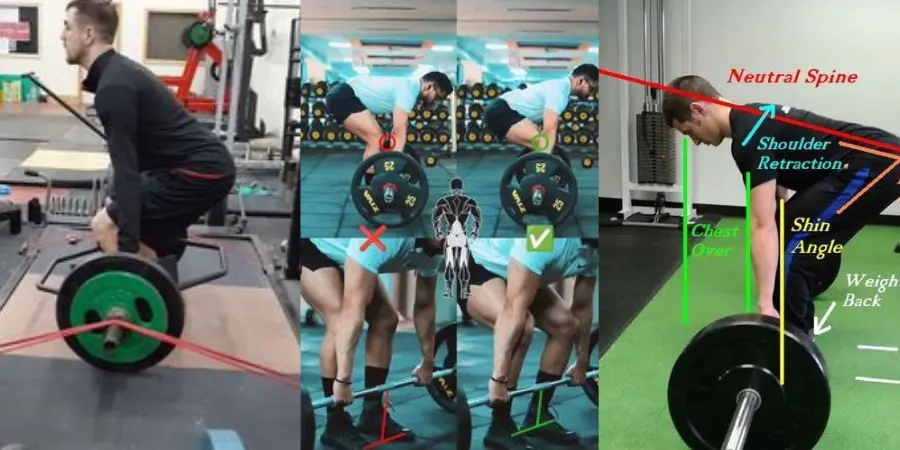
Research shows that trap bar weight are a good workout for strengthening the hinges. Swinton et al. looked at two types of lifts in 2011. They used loads ranging from 10% to 80% of one-rep max (1RM). With a barbell, the lifters in the study were able to lift an average of 244.5 kg (539 lbs), and with a trap bar, they were able to lift 265 kg (584 lbs).
The deadlift with a hammer had a peak hip flexion moment of 353Nm and a peak knee flexion moment of 96Nm. This made the hip-to-knee moment ratio 3.68:1. Similarly, 3.56:1 was found in another study.
During thetrap bar squat, a peak hip flexion moment of 325.6Nm and a peak knee flexion moment of 182.5Nm were reached, giving a hip-to-knee moment ratio of 1.78:1. This shows how the trap bar weight is different because it works both the hip and knee extensors, which is good for building the whole lower body.
| Metric | Conventional | Trap bar |
| Peak Hip Moment | 353Nm | 325.6Nm |
| Peak Knee moment | 96Nm | 182.5Nm |
| Hip: Knee Ratio | 3.68:1 | 1.78:1 |
Optimizing Strength with Squats and Deadlifts
Squats and deadlifts are basic workouts that can help you become very strong and mobile. Well-trained lifters have shown that these moves work important muscles at key places. When you do squats, your knees and hips bend together, which helps your lower body grow in a balanced way.
Maximizing Joint Mobility
Squats, with about 100 to 120 degrees of flexion at the knees and hips, are a great way to build power and flexibility. With 100 to 110 degrees of hip flexion and 50 to 60 degrees of knee flexion, the traditional deadlift focuses on the hips. This helps build a strong posterior chain.
The Power of Combined Movements
Squats and deadlifts work well together. Squats build strength all over the lower body, but traditional deadlifts focus most on the hip extensors. The trap bar is the best of both worlds because it works both the hips and the knees, making you stronger overall and improving your athletic ability.
The trap bar squat may look more “squat-like,” but it is still an excellent hinge-based exercise. Its unique form supports balanced strength training, making it a must-have for anyone who wants to get stronger, improve their mobility, and get fitter overall.
Finally, I want to review something from the study that showed the highest joint moments in both the regular and trap bar weight: All the weights used were based on the heaviest conventional deadlifts the subjects could do. With a trap bar, they could deadlift 8.4% more weight.
The traditional deadlift had a higher peak spinal flexion moment (9.2% higher) and a higher peak hip flexion moment (8.4% higher). The hip extensors and spinal erectors would likely have been under about the same amount of stress if the subjects had used the same relative load with each bar instead of the same absolute load (i.e., 80% of trap bar 1rm vs. 80% of conventional 1rm).
The trap bar squat works your back and hip extensors as hard as the regular deadlift, if not harder. It works them just as hard and gives your quads a little extra work, though not nearly as much as squatting does. What’s not to love?
Benefits of the trap bar deadlift

It’s simpler to learn than the deadlift with a bar.
The barbell deadlift is relatively easy, but most people need at least a few sessions to get the hang of it, and it takes a long time to learn.
Finding your balance is the hardest part of learning. Because the bar has to stay in front of your legs, it’s easy to fall forward or around your back to make up for it. Your shins won’t get in the way when you do the trap bar weight. This makes keeping your balance and back straight easier, especially if you’re new to the move.
At lockout, there is no hyperextension.
Over-pulling is a common mistake that people make when they do dumbbell deadlifts. When people lock out the weight, they move their back too far forward to finish the lift. It’s not the end of the world, but it looks silly and is a little riskier than just ending upright. With the trap bar alternative, you can only use the barbell in front of you as a support to go further. It’s natural for people to take a good lockout stance.
You don’t need a mixed grip.
You can hold on to big weights in a barbell deadlift in three ways:
- Hook grip (very painful).
- Straps (which most people avoid for no good reason).
- A mixed grip (one hand pronated and one hand supinated).
A mixed grip is what most people choose. Some people worry that a mixed grip will cause muscle imbalance because it can make you move your weight slightly off-center. Some people are worried about it, but it’s not a big deal. More importantly, some people tear their biceps on the arm bent over when they squat. The handles on the trap bar let you use a neutral grip without having to supinate one hand. This grip is as safe as a mixed grip because the bar can’t roll out of your hands.
If your hip range of motion isn’t good, high handles may help.
This could be the best thing about the trap bar. A “normal” hip range of motion with the knees bent 90 degrees (so the hamstrings don’t get too tight) is 100 to 120 degrees. Remember that for a standard deadlift, the hips must be bent about 100 to 110 degrees, the knees shouldn’t be bent to 90 degrees, and the hamstrings must be tight.
There are a fair number of people whose barbell deadlift starts past their end-ROM hip flexion. For most people, it begins near the end-ROM hip flexion. No matter how much movement work they do, many people can’t get their hips to bend enough to deadlift from the floor. To adjust, these people have to bend their backs, which raises their risk of spinal disc injuries.
If they were stuck to low rack or block pulls, they’d be fine deadlifting with a barbell. But I’ve seen that many people are stubborn and want to avoid setting up rack pulls or block pulls every time they deadlift or will not stop pulling weights off the floor.
The trap bar weight high handles limit the range of motion so that almost anyone can pull from the floor and keep their back straight. Plus, you don’t have to set up any tools, and since the weight still starts on the floor, people are less likely to refuse to use the high handles. It’s still easy to get a big, positive training benefit from the range of motion, and it’s more comfortable for many people.
It can still be as hip-dominant as a deadlift with weights.
Having a grab bar gives you more room to move. For a barbell deadlift, you must pull with your hips instead of your legs so the bar stays in front of your legs during the move. For that, you need to push your butt back, keep your knees from moving forward too far, and so on.
With a trap bar, you can still deadlift in the same way:
- Push your butt back.
- Keep your knees from moving forward too far.
- Deadlift as if you were using a barbell (but without hurting your shins and with less chance of bending your spine)
You can move your knees forward and drop your hips a little to work your legs more. You can do that with the trap bar. You can’t do anything else with a hammer.
Benefits and Insights into the Trap Bar Deadlift
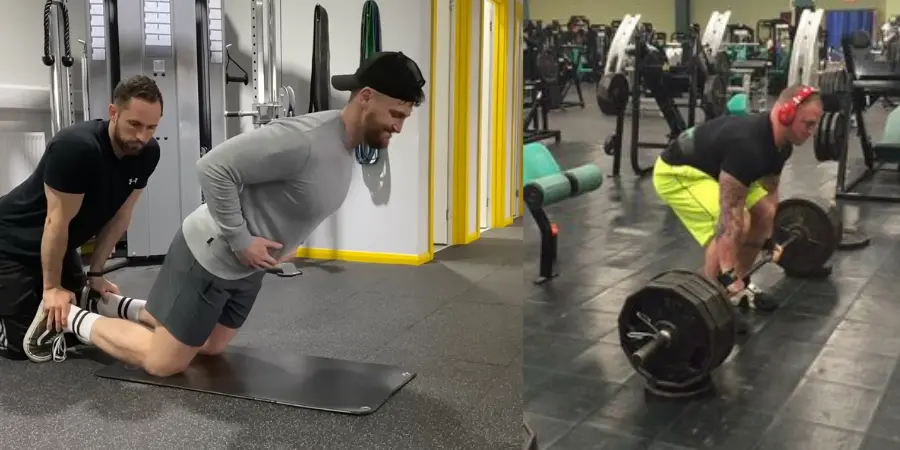
1.A Great Alternative to Traditional Deadlifts
Although the trap bar squat isn’t usually used in powerlifting events, it’s still a great way to get stronger overall. People who go to the gym and want to improve their form and technique will love this choice. It can be used in many ways and is a great addition to any workout plan.
2.Comfortable Handle Design for Different Body Types
The handle shape of the trap bar is one of its best features. It’s made to be comfortable for people of all body types. It works well for most people with the standard handles, but some versions fit people who are shorter or taller better, so everyone can use it easily.
3.A great way to change up your deadlifts
The trap bar squat is a different train method than the regular deadlift. It works muscles in a different way. It’s great for people who want to change things up in their routine because it’s a new way to work out that can help muscles grow in new ways.
4.Helps with Grip and Stability
The trap bar jumps are a great way to get stronger grips and more stable overall. It may take some practice for some people to get the grip right. But once you do, you’ll be much better able to keep control during your pulls. It’s a safe and controlled way to get stronger and better at your form.
5.Great for getting muscles to work.
The barbell and trap bar jumps work muscles in a slightly different way. Plus, it’s a great way to get stronger while working on your legs, glutes, and core. The trap bar is a great way to build a strong base, no matter how much experience you have lifting weights.
6.Promoting Conversations on Social Media
People on social media may have different thoughts about the trap bar deadlift, but exercise fans worldwide have a lot of good things to say about it. Many people are excited to add it to their routines, and seeing how other people are using this flexible exercise to improve their workouts always inspires me.
Why Powerlifters and Non-Powerlifters Should Include the Trap Bar Deadlift
For Powerlifters:
The trap bar deadlift can be a great way to keep up your fitness when the season is over. As you prepare for a meet, you should still focus on heavy deadlifts with a barbell. However, the trap bar squat has perks that can help you improve your technique and lower your risk of injury. Encouraging you to stand up straighter can help you avoid putting too much pressure on your back. This is especially important when you’re tired. The trap bar also lets you overload, so you can lift bigger weights using the same motion pattern as a regular deadlift.
The trap bar is an excellent choice for lifters who need to work their legs more during the first part of the lift. You can train your quads to help with the pull by letting your knees move forward on purpose. This will make using them easier when you return to heavy deadlifts. This makes the start of your lifts easier and more muscular, which improves your performance.
For Non-Powerlifters:
The trap bar deadlift is an excellent exercise for people wanting to become stronger and more powerful. It has a few benefits over the regular deadlift that make it a safer and easier choice for many. Eliminating the need for a mixed grip lowers the risk of harm and makes it easier to learn and do. It also lets you move faster and more explosively, making it a great way to build strength.
Most people still find the regular deadlift useful for training hip extension, but the trap bar is a better all-around move for building lower-body power. It’s great for people who want an easy, full-body exercise that doesn’t put too much stress on the lower back.
FAQs of Trap Bar deadlift
Final Thought
The trap bar deadlift is a fantastic exercise that offers great benefits for both beginners and experienced lifters. It is safer, easier to learn, and helps build overall strength and stability. Whether you’re aiming for better athletic performance or simply looking to get stronger, the trap bar deadlift is a valuable addition to any workout routine. Give it a try and see how it can elevate your fitness journey.


